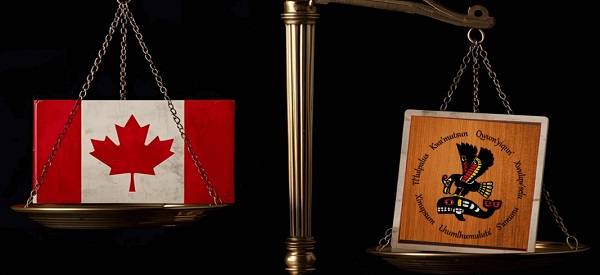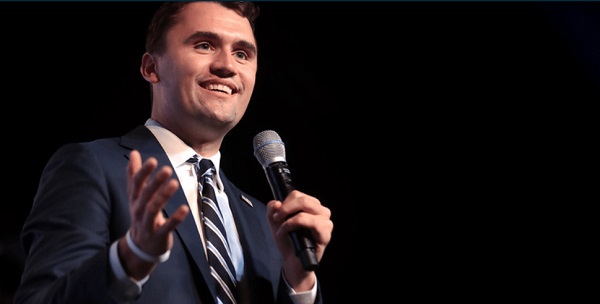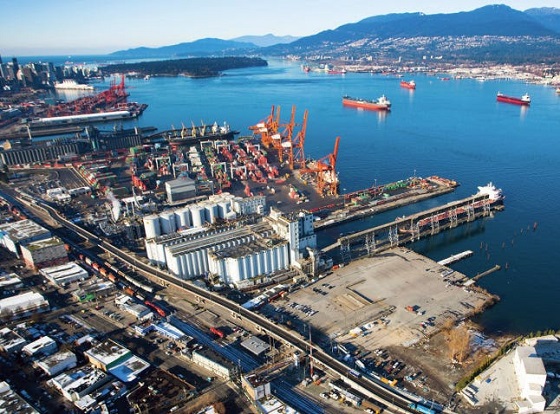The Justin Trudeau government has made reducing greenhouse gas emissions the pre-eminent goal of public policy. In 2021 it passed the Canadian Net-Zero Emissions Accountability Act, binding present and future governments to a process intended to achieve “net zero” emissions by 2050 and to set incremental five-year emission reduction targets and plans towards that end. Net zero essentially means eliminating almost all the greenhouse gas (GHG) emissions resulting from the consumption of hydrocarbons – crude oil, natural gas and coal – in the Canadian economy, and doing so within 29 years of the new law’s passage.
This presents an immense challenge and is effectively impossible in the intended timeframe. Canadians currently rely on fossil fuels to meet about 73 per cent of their energy needs. These energy sources provide services essential to Canadians’ incomes and wellbeing: secure, reliable and affordable heat, lighting and motive power to move people and goods, as well as the food, medicine and other critical services to sustain them. Without these energy sources, Canadians would all be far poorer, colder, less mobile and less able to compete in the global economy.
 Impossible dream: With fossil fuels currently meeting 73 percent of Canada’s overall energy requirements and fulfilling critical needs from heating to medical services, getting to “net zero” emissions anytime soon seems delusional. (Sources of photos: (top two) Pexels; (bottom two) Unsplash)
Impossible dream: With fossil fuels currently meeting 73 percent of Canada’s overall energy requirements and fulfilling critical needs from heating to medical services, getting to “net zero” emissions anytime soon seems delusional. (Sources of photos: (top two) Pexels; (bottom two) Unsplash)
At least four trends are coming together to make the present policy course untenable:
- The Canadian public is becoming far more aware of the financial costs of the emission reduction measures, including especially the impact of “carbon” taxes (technically, taxes on fossil fuel-related emissions of carbon dioxide (CO2)) and higher electricity rates from switching away from lowest-cost generating options. Federal climate-related spending, by the government’s own admission (see page 125 of the pdf version of the linked document), is now in the range of $20 billion per year, while the economic cost of working towards net zero has been credibly estimated at $60 billion per year.
- The public – notably young people and seniors – are becoming more aware of the effects of climate-related regulations and taxes on the cost of living, especially the cost of housing, and on employment opportunities.
- There is a wide and growing disparity between the promises of politicians to reduce emissions and what is actually happening; no national emissions “target” has ever been met or is likely to be met.
- Rapidly growing emissions in many developing countries (especially China and India), which now collectively generate 68 percent of the world’s total, demonstrate that net zero will not be achieved globally. Furthermore, reductions achieved regardless of cost in Canada (which produces approximately 1.5 percent of global emissions) will yield negligible global benefits in terms of temperature or weather.
The Temptation of a Different Kind of “Net Zero” Policy
Based on these trends, it might be argued that Canada should perform an immediate policy U-turn and cancel all federal measures founded upon any claim of impending climate catastrophe. This would give new meaning to the term “Net Zero Policy”: a government whose climate change policy is to have no policy. Enthusiasm for such an approach must, however, be tempered by the recognition that it runs counter to the position held by all the main political actors in Canada, including notably the mainstream media. Policy, like politics, best evolves in the realm of compromise and consensus.
 “Axe the Tax” has its limits: Conservative Party leader Pierre Poilievre (top) has pledged to get rid of the hated consumer carbon tax and eliminate comprehensive electric vehicle mandates, but he’s expected to maintain the pricey “producer” carbon tax on industrial emitters. (Sources of photos: (top) The Canadian Press/Paul Daly; (middle) WSDOT, licensed under CC BY-NC-ND 2.0; (bottom) Shutterstock)
“Axe the Tax” has its limits: Conservative Party leader Pierre Poilievre (top) has pledged to get rid of the hated consumer carbon tax and eliminate comprehensive electric vehicle mandates, but he’s expected to maintain the pricey “producer” carbon tax on industrial emitters. (Sources of photos: (top) The Canadian Press/Paul Daly; (middle) WSDOT, licensed under CC BY-NC-ND 2.0; (bottom) Shutterstock)
Thus, one should consider where might lie a “middle ground” that could garner the support not only of those strongly opposed to all elements of current policy – which can loosely be described as Conservative leader Pierre Poilievre’s core base – but also of moderates, i.e., people who do not doubt the general notion of climate change but who shy away from radical or ruinous policies to deal with it. This disparate category likely includes much of the business community, what used to be called “Red Tories”, some centrist Liberals disaffected with Trudeau and some working-class NDP voters suspicious of that party’s current direction.
Politics at its most basic will require that the Conservatives have something to put in their campaign platform entitled “climate change”, “emissions” or, more broadly, “the environment”. So far, Poilievre has been cobbling together policy ideas seemingly ad hoc. As practically every Canadian knows, he pledges to get rid of the consumer carbon tax – the one everyone pays at the gas pump or on their natural gas heating bill.
Less understood, however, is that Poilievre is widely believed to intend to maintain the “producer” carbon tax on industrial emitters – an equally steep, equally escalating levy that is burdening industry with billions of dollars in additional taxation. Additionally, Poilievre has promised to get rid of some major Liberal-imposed regulations – like the mandate to transition to entirely electric vehicle production by 2035 – but would rely even more heavily on other technocratic regulations at the industrial level.
Some of these policies make sense on their face; some might not make sense at all. What is clear, though, is that the Conservatives do not have a complete climate change and/or environmental policy – at least not one they have shared with the public. Eliminating the consumer carbon tax as an unfairly imposed cost and needless drag on the economy as well as a symbol of climate policy over-reach would be an important and politically popular way to demonstrate a more common-sense approach.
It is not enough, however, and it would leave a new government vulnerable to the accusation that it lacked a coherent and well-considered approach. Attempting to govern without a clearly articulated overall policy on climate would politically damage even a solid majority government; in a minority situation, it could be enough to destabilize the government altogether and prompt an early election.
A Better Way
There is a better way – a middle way between the current ideological approach and a no-policy-policy. It is inspired by the work of the Copenhagen Consensus Center. This ongoing project seeks to establish priorities for advancing global welfare in a range of areas, from battling diseases like malaria to advancing national economic development to addressing climate change, through methodologies based on welfare economics, which centres on cost-benefit analysis.* The Copenhagen Consensus was conceived and launched in the early 2000s by Bjorn Lomborg, the famous Danish environmentalist. In each policy area examined, subject matter experts present potential policy solutions, which are evaluated and ranked by a panel of economists, thus emphasizing rational prioritization through economic analysis.
Of 15 possible policy measures to respond to climate change, the Copenhagen Consensus panel ranked carbon taxes the very worst – something that’s of obvious relevance to Canada. Also of interest in the Canadian context was the experts’ strong endorsement of research into carbon storage.
In 2009 the Copenhagen Consensus assembled an expert panel to consider the best responses to climate change and rank them as priorities. The panel was asked to answer the question: “If the global community wants to spend up to, say $250 billion per year over the next 10 years to diminish the adverse effects of climate changes, and to do most good for the world, which solutions would yield the greatest net benefits?”
In the resulting report, the top priorities generally focused on investments in scientific research and technology development and commercialization, while measures to reduce CO2 emissions using currently available technologies were ranked lower, because these were found to incur high costs in relation to the expected environmental benefits. Of 15 possible policy measures to respond to climate change, the Copenhagen Consensus panel ranked carbon taxes the very worst – something of obvious relevance to Canada. Also of interest in the Canadian context was the experts’ strong endorsement of research into carbon storage (something that Alberta and Saskatchewan are very enthusiastic about), planning for adaptation and the expansion and protection of forests.
 A better way: Founded by Danish environmentalist Bjorn Lomborg, the Copenhagen Consensus Center uses rational economic analysis to advance global welfare in areas from battling disease to addressing climate change. (Source of left photo: TED Conference, licensed under CC BY-NC 2.0)
A better way: Founded by Danish environmentalist Bjorn Lomborg, the Copenhagen Consensus Center uses rational economic analysis to advance global welfare in areas from battling disease to addressing climate change. (Source of left photo: TED Conference, licensed under CC BY-NC 2.0)
The Copenhagen Consensus approach to climate policy presumes that human-induced climate change is occurring and that it probably will have adverse effects, but it contends that other social and environmental issues are more serious threats to humanity and should be addressed as higher priorities. Its careful analyses came to recognize the limitations of currently available technologies in achieving a cost-effective transformation of the global energy system. This is why it advocates prioritizing a significant increase in funding of basic science to accelerate the discovery and commercialization of new emission-reducing technologies. It also places priority on measures taken to adapt to (rather than seek to prevent) potential climate changes and to enhance the overall resiliency of the energy system.
Climate Change Policy Implications for Canada
The Copenhagen Consensus’ cost-benefit-based prioritization of climate change policies is applicable to Canadian policy-making and governance approaches in several important and broad areas, at not only the national but international and inter-provincial levels. What follows is a brief, simplified discussion of the most important aspects, keeping in mind that some of these are large issues in themselves and not resolvable overnight.
Remove the Pressure of Overly Ambitious and Arbitrary Targets
Canada has never met any of the targets set at the international or national levels regarding either the magnitude of emission reductions or the arbitrary dates by which these would be reached. The use of such arbitrary and unrealistic targets should be reduced or avoided. A first step in applying the Copenhagen Consensus’ recognition of the immense difficulty and complexity of achieving an energy transition, along with the need for new technologies whose development does not occur according to a government-controlled timetable, would be for Canada to postpone the “Net-Zero by 2050 goal” to at least 2070 if not 2100.
Adopt a Multi-Goal Framework
Canadian climate policy would henceforth be developed within a multi-goal public policy framework. Rather than making emission reduction the preeminent goal, the federal government would seek to optimize climate policy alongside multiple other public policy objectives including economic prosperity (growth, employment, investment and trade), social harmony, environmental quality, financial responsibility, energy security, defence and promotion of good federal-provincial and international relations, among others.
 “Arbitrary targets”: Applying Copenhagen Consensus rational analysis would mean abandoning or postponing Canada’s “Net-Zero by 2050” goal and focusing instead on practical environmental improvement projects. Shown at bottom, the Gold Bar Wastewater Treatment Plant in Edmonton, Alberta. (Sources of photos: (top) JessicaGirvan/Shutterstock; (bottom) Urban Edmonton)
“Arbitrary targets”: Applying Copenhagen Consensus rational analysis would mean abandoning or postponing Canada’s “Net-Zero by 2050” goal and focusing instead on practical environmental improvement projects. Shown at bottom, the Gold Bar Wastewater Treatment Plant in Edmonton, Alberta. (Sources of photos: (top) JessicaGirvan/Shutterstock; (bottom) Urban Edmonton)
Prioritize the Real Environmental Problems
Despite what one reads and hears in the mainstream media, Canada has very high environmental quality and the areas that need improvement are relatively few. These include solid waste management, sanitation/wastewater treatment and sulphur dioxide emissions per unit of GDP. Most of these are provincial and/or municipal responsibilities, but the federal government can play a role in funding capital investments. Where the federal government has jurisdiction and must regulate, regulatory efforts should focus on addressing tangible environmental problems with practical, cost-beneficial, affordable solutions to further clean up the air, water and soil, and the results should be measured and tracked by comprehensible and publicly available metrics.
Adhere to Technological Realism
A common-sense approach would recognize that energy transitions take a long time. The pace of transition away from fossil fuels must, accordingly, be guided by the rate at which new scientific discoveries can be applied to the development of new products and services and then commercialized to the point of true economic viability. A common-sense policy approach in Canada would abandon the presumption that governments can and should attempt to hasten the technology commercialization process by “picking winners”, granting large subsidies to favoured firms or otherwise trying to centrally plan the changes in the energy economy. Instead, the new approach would entail higher levels of government funding for basic research and development.
The federal government’s 2030 Emissions Reduction Plan could add about $55,000 to the average cost of a new home built in Canada. A new Canadian climate policy would abandon this plan and leave the establishment of building codes, zoning and construction approvals in the hands of provincial and municipal governments.
Promote Energy Security and Reliability
A new Canadian climate policy would repeal or substantially amend the Clean Electricity Regulations that mandate the elimination of hydrocarbon-based electricity generation by 2035, a goal that this recent study concludes is completely unfeasible. It would also require that future federal or provincial regulation of GHG emissions be based upon a systematic review of the potential impacts on the viability and competitiveness of Canadian industry. Finally, it would eliminate the impending federal cap on oil and natural gas industry emissions (which was unveiled on November 4 and imposes a 35-percent rollback in GHG emissions by 2030) and take other measures to ensure that Canada, which has the world’s third-largest crude oil reserves as well as world-scale natural gas reserves, can continue to increase energy production to meet the needs of domestic and export markets.
 The steep cost of compliance: The Justin Trudeau government’s 2030 Emissions Reduction Plan will add an estimated $55,000 to the average price of a new home, pointing to the need to eliminate costly and pointless regulation. (Source of photo: pnwra, licensed under CC BY 2.0)
The steep cost of compliance: The Justin Trudeau government’s 2030 Emissions Reduction Plan will add an estimated $55,000 to the average price of a new home, pointing to the need to eliminate costly and pointless regulation. (Source of photo: pnwra, licensed under CC BY 2.0)
Reduce Housing Costs
According to the Fraser Institute, the federal government’s 2030 Emissions Reduction Plan could add about $55,000 to the average cost of a new home built in Canada. Even more stringent and costly regulations would undoubtedly follow after 2030 to meet the net zero target. A new Canadian climate policy would abandon this plan and leave the establishment of building codes, zoning and construction approvals in the hands of provincial and municipal governments. This would contribute meaningfully to addressing Canada’s housing affordability crisis.
Legislate Wisely
A new policy would include amending or repealing the Canadian Net-Zero Emissions Accountability Act. The entire law is a litigation “trigger” because it gives climate activist organizations weapons that they can use to engage in “lawfare” – the strategic use of legal proceedings to hinder, intimidate or delay an opponent.
Depoliticize the Regulation of Energy Infrastructure Projects
A new policy would return the regulation of energy infrastructure and rate-making to one that takes place at arm’s length from government political and policy direction. This would require changes to the federal minister’s control of the Canadian Energy Regulator. It would also be highly desirable to reform the system of environmental assessment and review by placing strict time limits on the duration of infrastructure project reviews. Today, regulatory reviews of major energy projects often take five years or longer to complete, and some have taken over 10 years.
The federal Impact Assessment Act (having last year been found largely unconstitutional by the Supreme Court of Canada) would be substantially amended so that the resulting federal law returns to being a review of the national environmental impacts (and any local impacts as these pertain to areas of clearly federal jurisdiction) rather than an exercise in jurisdictional duplication and an assessment of consequences for the entire planet.
 A common-sense climate change policy would also streamline, limit the scope of and quicken the currently often 10-year-long environmental assessment process. Shown, the LNG Canada project in Kitimat, B.C. under construction, January 2024. (Source of screenshot: Northcoast Drone/YouTube)
A common-sense climate change policy would also streamline, limit the scope of and quicken the currently often 10-year-long environmental assessment process. Shown, the LNG Canada project in Kitimat, B.C. under construction, January 2024. (Source of screenshot: Northcoast Drone/YouTube)
The principle of “whoever hears the evidence should decide” would be brought back into the law, with an appeal to the courts on a question of law only and an appeal to the federal Cabinet on a question of policy. This is how the Canadian Radio-television and Telecommunications Commission (CRTC) has worked for several decades.
The arbitrary and harmful bans on oil tanker traffic on the Pacific Coast and on new hydrocarbon exploration and development in Canada’s Far North would be removed.
Promote Federal-Provincial Harmony
In the pre-2000 period, federal climate policy explicitly recognized that measures should not entail undue costs and burdens on any region or province. This went out the window in the Trudeau era and became a leading cause of federal-provincial discord. A new policy would re-institute this as a cardinal principle. Among other things, it would also be essential to ensure that there was ample coordination and consultation with all affected provinces before any new international commitments were made.
 Focus on harmony: To promote more efficient cross-border trade, Canada’s regulatory standards should align with those of the U.S. The incoming Donald Trump Administration is likely to discard electric vehicle mandates and “clean” fuel standards, policy shifts that will affect Canada. (Sources of photos: (top) AP Photo/Evan Vucc; (bottom) Sundry Photography/Shutterstock)
Focus on harmony: To promote more efficient cross-border trade, Canada’s regulatory standards should align with those of the U.S. The incoming Donald Trump Administration is likely to discard electric vehicle mandates and “clean” fuel standards, policy shifts that will affect Canada. (Sources of photos: (top) AP Photo/Evan Vucc; (bottom) Sundry Photography/Shutterstock)
Harmonize Canadian and United States Regulatory Regimes
It would be recognized that to facilitate more seamless cross-border trade with Canada’s largest trading partner, the United States requires that regulatory standards and codes developed in Canada, especially involving the regulation of fuel efficiency/emissions intensity of vehicles and appliances, be closely aligned with U.S. federal standards. It is widely expected that the incoming Trump Administration will discard electric vehicle mandates and “clean” fuel standards, policy shifts that clearly will affect Canada. Although this is not to suggest that Canada allow its policies to be dictated by the U.S., close attention should be paid.
Facilitate Truly Responsible Investing
Canada has committed to adopting the new Sustainability Disclosure Standard under International Financial Reporting Standards (IFRS), which imposes mandatory sustainability-related disclosure and climate-related financial disclosure. These and similar regulatory initiatives are increasing the burden on Canadian firms to report not only their own estimates of GHG emissions but also to try to guess those of their suppliers and customers. This is absurd on its face and creates another trigger for endless litigation when such guesses turn out wrong, prompting accusations of fraud. A new Canadian climate policy would severely restrict the use of such accounting measures.
Fairly soon, the current Official Opposition is likely to take on the responsibility of actually governing. To respond effectively to the economic and political threats posed by climate catastrophism, advocates of policy change must go beyond merely targeting individual policies for cancellation based on complaints about the harm they do.
Build Adaptation and Resilience
A new Canadian climate policy would place greatly increased, perhaps primary, emphasis on measures to increase the resilience of Canadian infrastructure and economy to future climate changes. Adaptation measures can avoid or reduce adverse future impacts by, for example, changing human behaviour in advance, such as land use rules that prohibit construction of buildings in flood-prone areas, or by taking actions to protect valued resources, communities and landscapes. Many adaptation measures also increase resilience towards climatic variability such as droughts and storms, making them potentially attractive policies even in the absence of long-term human-induced changes. They can pay dividends to society even if all the concerns about climate change turn out to be greatly exaggerated.
 A new climate change policy should include measures to increase the resilience of Canadian infrastructure and the economy to future climate changes. Shown, (at top) a storm in coastal Nova Scotia; (at bottom) flooding in B.C.’s Lower Mainland. (Sources of photos: (top) The Canadian Press/Andrew Vaughan; (bottom) The Canadian Press/Jonathan Hayward)
A new climate change policy should include measures to increase the resilience of Canadian infrastructure and the economy to future climate changes. Shown, (at top) a storm in coastal Nova Scotia; (at bottom) flooding in B.C.’s Lower Mainland. (Sources of photos: (top) The Canadian Press/Andrew Vaughan; (bottom) The Canadian Press/Jonathan Hayward)
Who Might Implement the Copenhagen Consensus in Canada?
It is clear that the Trudeau government is incapable of such a significant policy reform as summarized above. It is at least conceivable that, were Trudeau to be replaced before the next election, his successor might consider some of these measures; conceivable, but not likely. Most probably, the task of implementing such broad policy changes would fall to a new Conservative federal government. The party’s promises to “Axe the Tax” correctly address the mounting public concern about the impact of carbon taxes on the cost of living and competitiveness of Canadian business, as well as the unfairness with which they have been applied.
Fairly soon, however, the current Official Opposition is likely to take on the responsibility of actually governing. To respond effectively to the economic and political threats posed by climate catastrophism, advocates of policy change must go beyond merely targeting individual policies for cancellation based on complaints about the harm they do. They must think through what a realistic, credible, politically palatable – and cost-effective – climate policy framework would look like. The time to start is now.
*Cost-benefit analysis is a tool economists use to compare the estimated costs and benefits (or opportunities) associated with a proposed undertaking. It involves tallying up all the current and projected long-term costs and benefits, estimating the financial equivalent of those for which dollar equivalents are not available, and converting everything into present-value terms using discount rates. If the costs outweigh the benefits, then the decision-makers should rethink whether to proceed.
Robert Lyman is a retired energy economist who served for 25 years as a policy advisor and manager on energy, environment and transportation policy in the Government of Canada.














